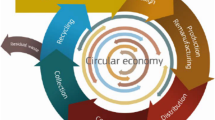Abstract
This paper summarises the views and experience of two companies specialising in providing technical solutions for increasing the performance of heat exchangers used in the process industries. It comments on the technical opportunities available to a processor to reduce overall energy use. Emphasis is made on the use of enhancement technologies retrofitted to existing heat exchangers, a scenario subsequently illustrated in associated case studies from either company. Enhancing heat transfer in existing and new heat exchangers constitutes a retrofit approach that can address some of the problems faced in a typical heat exchanger network (HEN). The paper thus demonstrates some of the driving forces leading companies to invest in saving energy, and sets out the benefits stemming from the use of process enhancement technologies. It concludes with the view that the most financially viable means of improving HEN efficiency frequently involves addressing the operation of existing heat exchangers first (by improving their performance via various retrofit/revamping options). Only when such options have been exhausted should end-users consider the usually much more costly and operationally difficult option of purchasing and maintaining more plant.

Graphical Abstract







Similar content being viewed by others
References
Brodowicz K, Markowski M (2003) Calculation of heat exchanger networks for limiting fouling effects in the petrochemical industry. Appl Therm Eng 23:2241–2253
Cal Gavin Ltd (2013). www.calgavin.com. Accessed 13 Mar 2013
CB&I—Lummus (2013). www.lummusonline.com/global/index.htm. Accessed 13 Mar 2013
Durban Platform (2011) www.un.org/wcm/content/site/climatechange/pages/gateway/the-negotiations/durban. Accessed 13 Mar 2013
Ebert WA, Panchal CB (1997) Analysis of Exxon crude-oil slip stream coking data. In: Bott TR et al (eds) Fouling mitigation of industrial heat-exchange equipment. Begell House, New York, pp 451–460
EMbaffle BV (2013) www.embaffle.com. Accessed 13 Mar 2013
HEAT-int (2013) Process Integration Ltd. www.processint.com/chemical-industrial-software/heat-int. Accessed 13 Mar 2013
INTHEAT—Intensified Heat Transfer Technologies for Enhanced Heat Recovery (2012) www.intheat.eu. Accessed 13 Mar 2013
Kapustenko P, Tovazhnyansky L, Arsenyeva O, Yuzbashyan A (2012) Mitigation of Fouling in plate heat exchangers for process industries. Chem Eng Trans 29:1441–1446. doi:10.3303/CET1229241
Kemp IC (2007) Chapter 8: Applying the technology in practice, Chapter: 9 Case studies. In: Linnhoff B, Townsend DW, Boland D, Hewitt GF, Thomas BEA, Guy AR, Marsland R Pinch analysis and process integration. A user guide on process integration for efficient use of energy, 1st edn. Elsevier, Amsterdam, the Netherlands
Klemeš J (ed) (2013) Handbook of process integration (PI). Woodhead Publishing Limited, Cambridge
Linnhoff B, Townsend DW, Boland D, Hewitt GF, Thomas BEA, Guy AR, Marsland RH (1982) User guide on process integration for the efficient use of energy. IChemE, Rugby
NEDO—New Energy and Industrial Technology Development Organisation (2013), Japan. www.nedo.go.jp/english. Accessed 13 Mar 2013
Pan M, Butalov I, Smith R, Kim JK (2012) Novel MILP-based iterative method for the retrofit of heat exchanger networks with intensified heat transfer. Comp Chem Eng 42:263–276
Ponce-Ortega JM, Jimenez-Gutierrez A, Grossmann IE (2008) Simultaneous retrofit and heat integration of chemical processes. Ind Eng Chem Res 47:5512–5528
Rodriguez C, Smith R (2007) Optimization of operating conditions for mitigating fouling in heat exchanger networks. Chem Eng Res Des 85(6):839–851
Siemanond K, Kosol S (2012) Heat exchanger network retrofit by pinch design method using stage-model mathematical programming. Chem Eng Trans 29:367–372. doi:10.3303/CET1229062
Smith R (2005) Chemical process design and integration. Wiley, West Sussex
Smith R, Jobson M, Chen L (2010) Recent development in the retrofit of heat exchanger networks. Appl Therm Eng. doi:10.1016/j.applthermaleng.2010.06.006
Sprint© software (2013) CPI, The University of Manchester
The Energy Conservation Center, Japan (2011) Japan Energy Conservation Handbook 2011, www.asiaeec-col.eccj.or.jp/databook/2011/handbook11.pdf. Accessed 13 Mar 2013
Vengateson U (2009) Design of multiple shell and tube heat exchangers in series: E shell and F shell. Chem Eng Des 88(5–6):725–736
Wang Y, Smith R, Kim JK (2012) Heat exchanger network retrofit optimization involving heat transfer enhancement. Appl Therm Eng 43:7–13
Yang M, O’Meara A, Crittenden BD (2011) Determination of crude oil fouling thresholds. In: Malayeri MR, Müller-Steinhagen H (eds) Proceeding of International conference of heat exchanger fouling and cleaning, Greece, pp. 309–314, www.heatexchanger-fouling.com/papers/papers2011/44_Crittenden_Inserts_F.pdf. Accessed 13 Mar 2013
Zhu XX, Zanfir M, Klemeš J (2000) Heat transfer enhancement for heat exchanger network retrofit. Heat Transf Eng 2(21):7–18
Acknowledgments
Financial support from FP7-SME-2010-1 Grant Number 262205 (‘Intensified Heat Transfer Technologies for Enhanced Heat Recovery’—INTHEAT) is gratefully acknowledged.
Author information
Authors and Affiliations
Corresponding author
Rights and permissions
About this article
Cite this article
Gough, M., Farrokhpanah, S. & Bulatov, I. Retrofit process heat transfer enhancement to upgrade performance, throughput and reduced energy use. Clean Techn Environ Policy 15, 423–431 (2013). https://doi.org/10.1007/s10098-013-0623-5
Received:
Accepted:
Published:
Issue Date:
DOI: https://doi.org/10.1007/s10098-013-0623-5




